HRH the Prince of Wales visits Queensland in support of returned Anzacs
By John Dingle (Guest Blogger) | 13 August 2020
Guest blog by John Dingle.
After the war, Prince Edward VIII was assigned the role of flag-waver for the British Empire, almost constantly on tour to British Commonwealth countries to cement the relationship and to thank them for supporting Great Britain in the war. The first tour was to Canada and East Coast USA in 1919 and then, in 1920, Barbados, Panama, West Coast USA and across the Pacific to Hawaii, Fiji, New Zealand and Australia.
In Australia he arrived in Melbourne, toured Victoria, laid the Foundation Stone of the First Parliamentary Building in Canberra, then on to Western Australia, South Australia and Tasmania. After returning to Sydney he boarded the Governor-General’s Rail Carriage and travelled to the Queensland border where he changed trains at Wallangarra onto the narrower 3’6” gauge Queensland railway system.
The visit to Queensland in 1920, 26 July – 5 August was commemorated by the Queensland Government issuing a gilt medal bearing the portrait of the prince in military uniform and the Queensland coat of arms on the reverse.
![Visit of the Prince of Wales to Queensland,1920 AD [medal]](/sites/default/files/styles/slq_standard/public/pic.jpg?h=671a5c05&itok=-DdomOOA)
Visit of the Prince of Wales to Queensland,1920 AD [medal], Photographer: Jon Augier. Source: Museums Victoria, Copyright Museums Victoria / All Rights Reserved.
He boarded the Queensland Vice Regal carriage attached to one of the C18 class steam locomotives, number 693, ‘Sir William MacGregor’, named after the Governor in 1915. Like all royal carriages it was built in the North Ipswich Railway Workshops.
The royal coat of arms was attached to the front of the engine and the Prince of Wales fleur-de-lis attached to the tender as seen in this souvenir postcard.
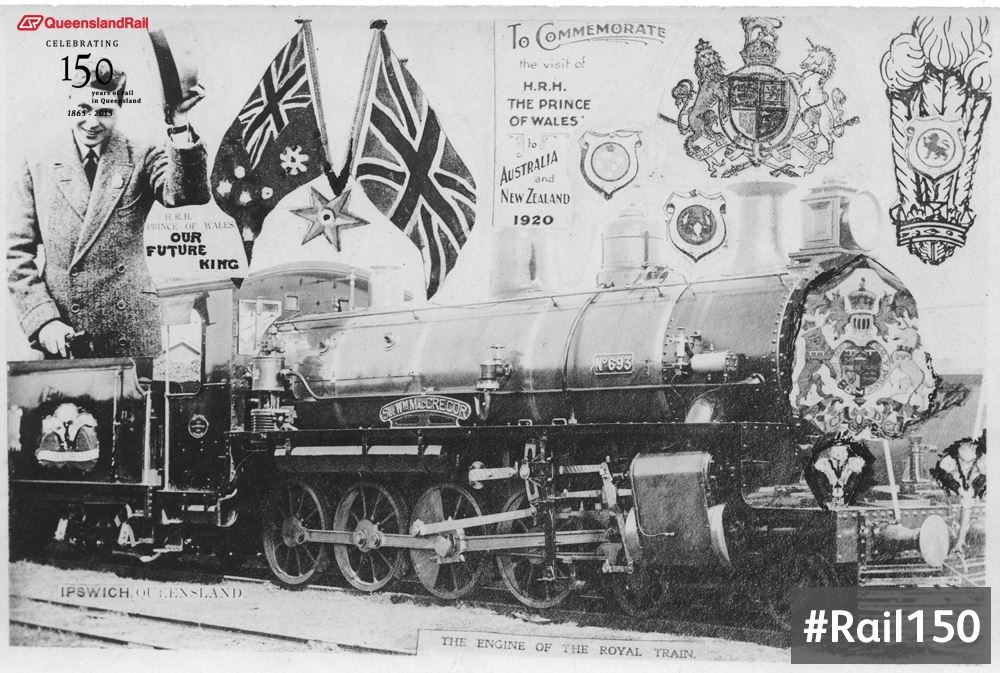
The Prince of Wales Royal Train, with steam locomotive C18 No. 693, ‘Sir William MacGregor’ doing the official duties, in 1920. Source: Image courtesy of Queensland Rail posted online April 27, 2017 as part of Queensland Rail’s 150yrs of service celebrations.
The Vice Regal carriage designated ‘Special Car 445’is on display in the Ipswich Workshops Rail Museum and is still used on State occasions.
When the train arrived at Cottonvale in the Granite Belt near Stanthorpe, the Vice Regal carriage was detached from the C18 locomotive and diverted onto a lighter branch rail line and attached to two B13 locomotives. It was a single track with no signals because there was only one train on the line that went forward and reverse.
The line was constructed to service the Pikedale Soldier Settlement and the stations along the line bore the names of places where the Australians had fought on the Western Front in France and Belgium: Fleurbaix, Poziers, Bullecourt, Passchendale, Bapaume, Messines and Amiens, all places well known to the Prince from his service in WWI. When the train got to Amiens, he officially opened the rail line. The Prince walked through the crowd gathered at Amiens station and spoke to many of the returned servicemen, many of whom wore their uniform in his honour.
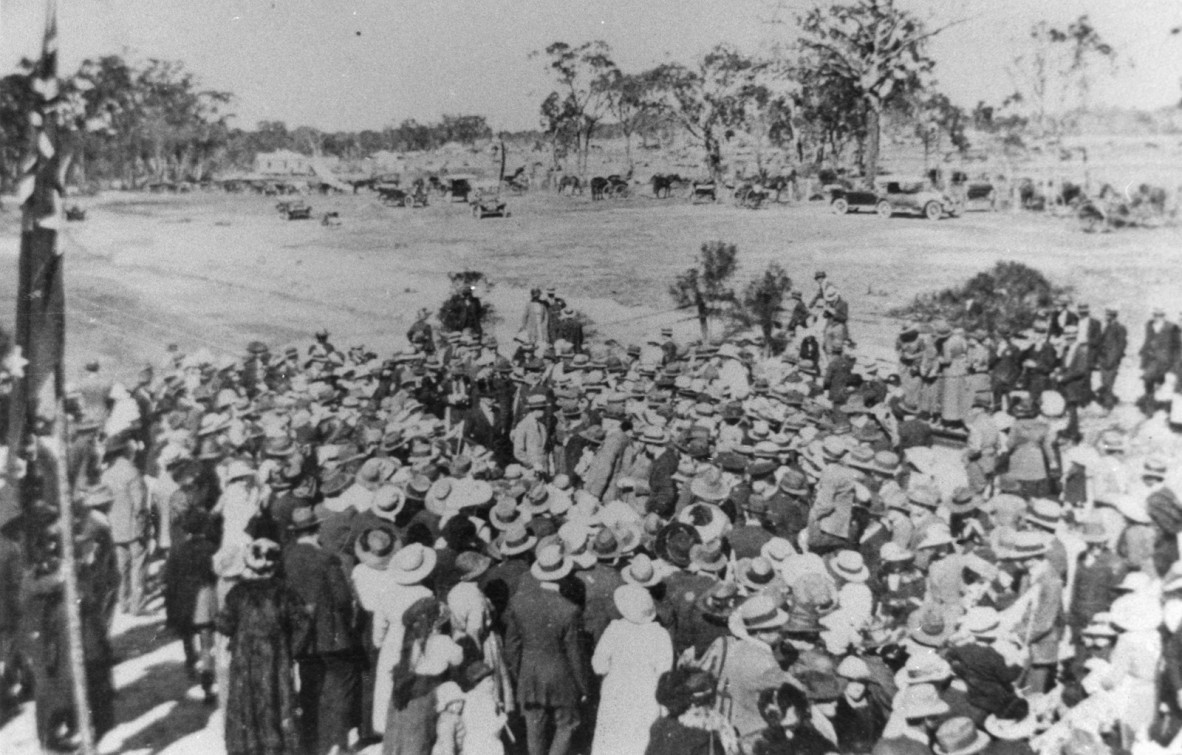
Large crowd gathered for a royal visit, Amiens, 1920, Negative number 150186, John Oxley Library, State Library of Queensland.
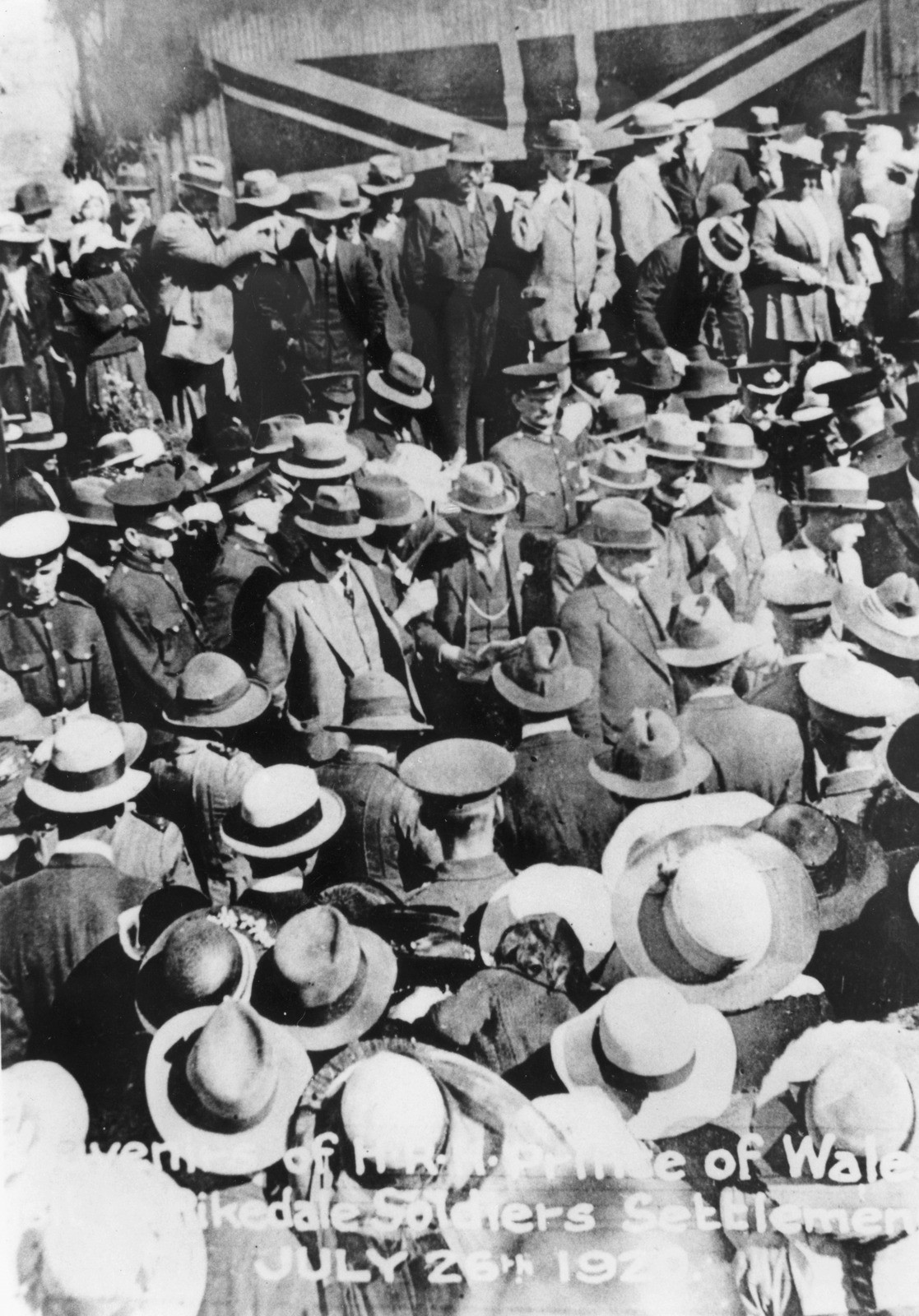
Large crowd waiting to greet the Prince of Wales, Amiens, 26 July 1920, Negative number 68817, John Oxley Library, State Library of Queensland
The line was closed in 1974. The station signs that were part of the Armistice Way are currently displayed outside the Stanthorpe and District Heritage Museum.
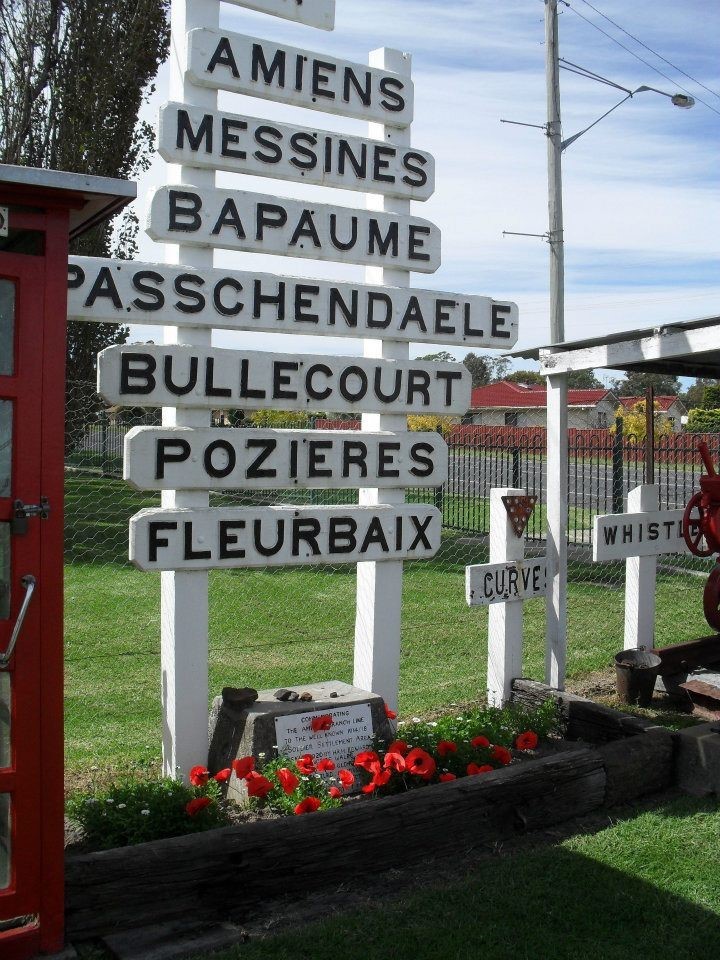
The Railway station signs that were part of the original Amiens rail line are permanently displayed at the Stanthorpe and District Heritage Museum, Stanthorpe. Source: Photo courtesy of Stanthorpe and District Heritage Museum, 2012.
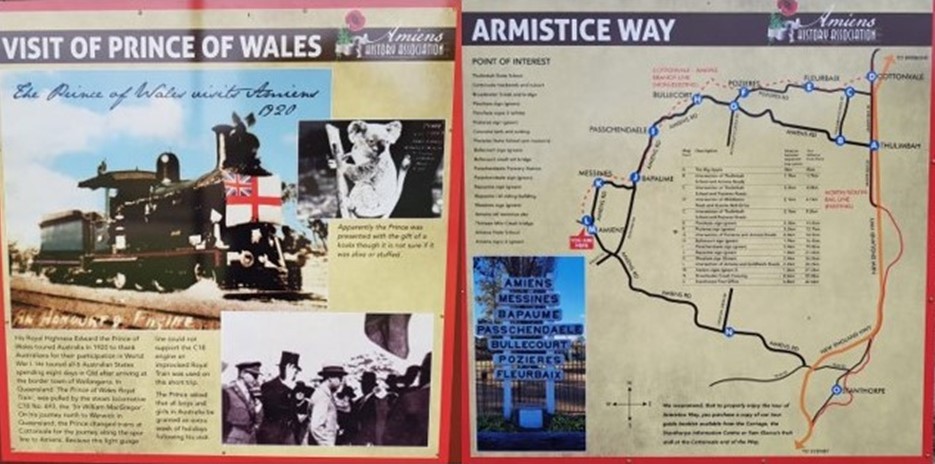
In preparation the Amiens History Association produced storyboards outlining the historic Royal visit and the opening of the rail line on storyboards 100 years earlier.
The Queensland governor, His Excellency the Honourable Paul de Jersey AC, was due to visit Amiens for the centenary celebrations in July this year. Unfortunately, this visit was postponed due to COVID-19. You can view details posted on the Associations Facebook page in February this year along with images of the newly established Amiens Legacy Centre.
Following his visit and during the State Dinner in Brisbane, the Prince referred to his visit to Amiens: -
“You cannot do too much for your diggers, who played such a big part in saving the Empire, and who should be looked upon as the backbone of the Commonwealth… I came to Australia already feeling a strong bond of comradeship with your troops; I shall leave it feeling even a stronger bond of comradeship with the Australian people as a whole, and my heart will always be with them in their mighty task of building up a solid British fabric of freedom, justice and security with fair play for all upon this vast continent.”
By 1920, soldier settlements were established in 18 locations around the State.
Leaving Australia on the Royal Yacht, ‘Renown’, Edward wrote an open letter to the government representatives of Australia:
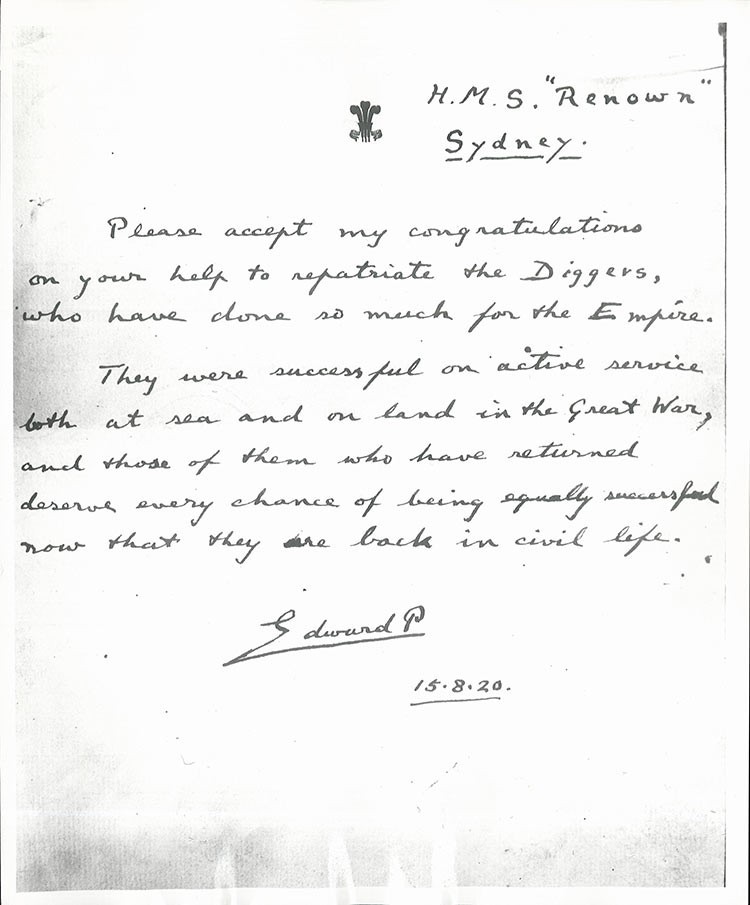
Image: The open letter penned by HRH the Prince of Wales dated 18 August 1920. Source: Exhibited in ‘From Bank to Battlefield’, exhibition, Reserve Bank of Australia Museum
Many of the returned servicemen struggled to reintegrate into Australian society and it is only now, 100 years later that these stories are being documented.
In funding the Queensland Anzac Centenary Grants Program and the Queensland Anzac Centenary Spirit of Service Grants Program, The Queensland Premier, Annastacia Palaszczuk MP, said that hundreds of Queensland communities have undertaken inspiring projects to honour the 57,705 Queensland men and women who volunteered to serve during the First World War.
We will remember them.
Read John’s other blogs
Comments
Your email address will not be published.
We welcome relevant, respectful comments.